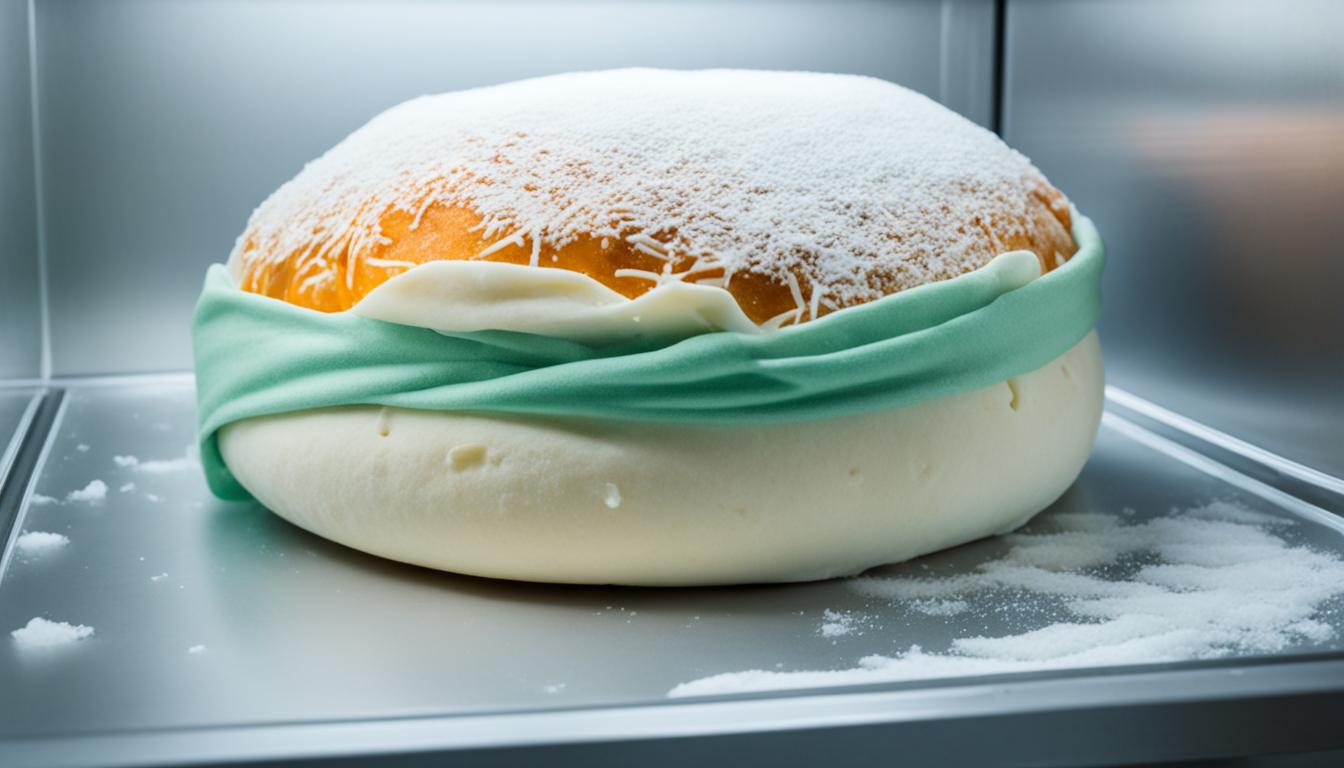Did you know that the optimal cold fermentation time for pizza dough can significantly enhance its flavor and texture? Experienced bakers and pizza-makers understand that allowing the dough to slowly ferment in the fridge is the secret to unlocking the complex, slightly sour notes that make a truly delicious crust. In this edition of The Pizza Lab, we’ll explore the magic of cold fermentation and uncover the ideal duration to achieve the perfect balance of aroma and mouthfeel.
Fermentation is a fascinating process that plays a crucial role in giving pizza crust its light, airy structure and distinctive complex, slightly sour taste. It involves using yeast to digest carbohydrates and convert them to alcohol and carbon dioxide. The fermentation process goes through several stages, including mixing/kneading, the first rise, the second rise/proof, and baking. Experienced bakers and pizza-makers know that allowing the dough to cold ferment, or retard, in the fridge can greatly improve the flavor and texture of the final crust.
Unveiling the Magic of Cold Fermentation
During the fermentation process, the yeast begins to digest carbohydrates, producing carbon dioxide, which causes air bubbles in the dough to inflate and swell. This, along with the strengthening of the gluten network, gives the bread its structure. At warmer temperatures, the yeast multiplies and produces carbon dioxide rapidly, but this can also lead to undesirable flavors. Retarding the dough by placing it in a cold environment like the fridge slows down the yeast activity, allowing it to produce more of the desirable flavor compounds and fewer of the sour ones.
The Role of Cold Temperatures in Enhancing Flavor
The colder temperatures of the fridge also give the enzymes present in the flour more time to cleave proteins, a process known as autolysis. This makes it easier for the gluten strands to untangle, straighten out, and link up, improving the overall gluten structure. Additionally, the colder the dough is when shaped before the final proof, the fewer bubbles are forced out, leading to a better texture in the final baked product.
Textural Benefits of Extended Cold Fermentation
As the fermentation time is extended, the dough develops a more open, airy structure with larger, thinner bubbles. This is due to the improved gluten development, which allows the dough to form these larger, more dramatic blisters when baked. The contrast of the pale, thin blisters and the deeper brown of the rest of the crust is what creates the distinctive “leopard-spotting” pattern of a well-fermented Neapolitan pizza crust.
the pizza lab how long should i let my dough cold ferment
In the Serious Eats “Pizza Lab” experiment, the author found that 3 to 5 days of cold fermentation in the fridge (at around 38°F) was the optimal time frame for dramatically improving the dough’s flavor, texture, and workability. Longer fermentation times, up to around 6 days, continued to improve the results, but beyond that, the dough started to develop an off-putting sour flavor and lose its ability to rise properly. The author noted that the exact timing may vary depending on individual fridge temperatures, so it’s important to experiment to find the sweet spot for your setup.

Mastering the Perfect Cold Ferment Duration
While we may sometimes need a quick one-day pizza dough solution, the benefits of allowing the dough to cold ferment for 3 to 5 days are truly remarkable. This extended fermentation time enables a remarkable improvement in flavor development, gluten structure, and the overall airy, open texture of the final crust.
By experimenting with the cold fermentation duration and closely observing the dough’s evolving characteristics, we as bakers and pizza enthusiasts can find the optimal time frame to achieve the perfect balance of flavor and texture in our homemade pizzas. The cold fermentation time for pizza dough, the optimal cold ferment duration, and the benefits of extended cold fermentation all play a crucial role in unlocking the true potential of our pizza creations.
Whether you’re a seasoned pizza-maker or just starting your journey into the world of refrigerator pizza dough proofing and cold fermenting pizza dough for beginners, taking the time to enhance pizza dough flavor through cold fermentation and improve pizza dough texture with cold fermentation can lead to truly achieving the perfect cold ferment and the recommended cold ferment period for pizza. Embrace the the pizza lab how long should i let my dough cold ferment approach, and unlock the secrets to enhancing pizza dough flavor through cold fermentation.
